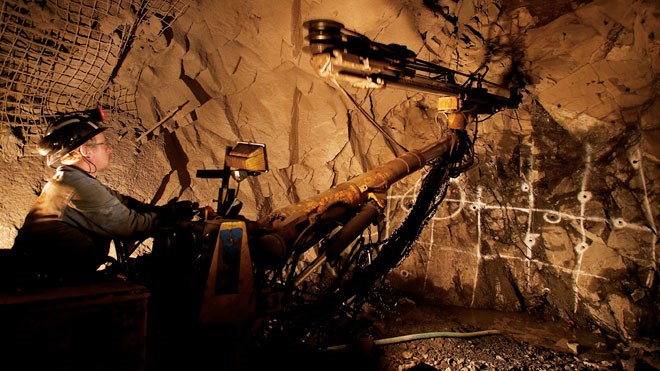Canada's mining industry will need to hire between 86,000 and 127,000 new workers over the next 10 years, to meet demand, says a new report from the Mining Industry Human Resources Council.
"In the long term, there is a tremendous amount of opportunities for careers in the mining industry," said Ryan Montpellier, the organization's executive director. "We still face an aging workforce."
Forty per cent of Canada's mining workers are over the age of 45, Montpellier said, and people in the sector tend to retire earlier than the Canadian average.
Taking a number of factors into account, including commodity prices, exchange rates and productivity levels, the Mining Industry Human Resources Council's baseline prediction is that there will be more than 11,000 new jobs in mining across Canada by 2025, and 94,000 jobs that will need to be replaced, due to retirement and workers leaving the sector for other reasons.
At the low end, if the mining industry contracts - as it did in 2014 due to low commodity prices - the sector will still need to recruit more than 85,000 people to fill vacancies.
Montpellier said there needs to be a strong effort to recruit people who have traditionally been less likely to enter the mining sector - these include Aboriginal people, women and new immigrants to Canada.
"Part of our challenge is to attract people into the northern communities," Montpellier said.
New immigrants in particular, he said, tend to settle in Canada's large urban centres, and miss out on potential job opportunities in more remote areas.
Another challenge the sector faces is that mining employers are three times more likely to use commuting workers - who live in one province but work in another - than any other industry in Canada.
Montpellier said commuting workers will only become more common as new mines are built in remote areas that do not have the population density to support the necessary workforce.
In the territories, 40 to 50 per cent of the mining workforce travels from the provinces to work at remote mines.
Montpellier added the outdated perception of mining needs to change.
"Very few people grow up and say, 'When I'm older I want to be a miner.' We need to change that," he said. "We need to promote what the modern mining industry has to offer."
He said new technologies are changing the types of jobs available in the mining sector, and while fewer people will be needed to operate equipment underground, there will be a greater need for the expertise required to repair and maintain that equipment.
The Mining Industry Human Resources Council has taken to social media to promote the modern job opportunities in the mining sector, and the higher than average salaries mining workers make.
The council's Canadian Mining Industry 2015 Employment, Hiring Requirements and Available Talent 10-year Outlook report is available here.
Join Sudbury.com+
- Messages
- Post a Listing
- Your Listings
- Your Profile
- Your Subscriptions
- Your Likes
- Your Business
- Support Local News
- Payment History
Sudbury.com+ members
Already a +member?
Not a +member?
Sign up for a Sudbury.com+ account for instant access to upcoming contests, local offers, auctions and so much more.
